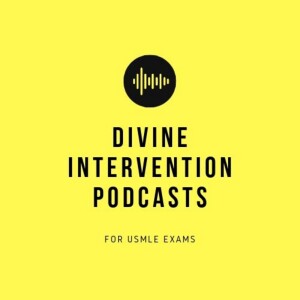

CISSP Cyber Training Podcast - CISSP Training Program
https://feeds.buzzsprout.com/2167626.rssEpisode List

CCT 263: Practice CISSP Questions - Secure Defaults and Defense in Depth (CISSP Domain 3.1)
Send us a textCheck us out at: https://www.cisspcybertraining.com/Get access to 360 FREE CISSP Questions: https://www.cisspcybertraining.com/offers/dzHKVcDB/checkoutGet access to my FREE CISSP Self-Study Essentials Videos: https://www.cisspcybertraining.com/offers/KzBKKouvSecurity vulnerabilities lurk in the most unexpected places – even in your home internet modem. Today we kick off with breaking news about a security flaw discovered in Cox modems that could potentially allow unauthorized access to run malicious commands on connected devices. While Cox reports fixing the issue within 24 hours, this real-world example perfectly illustrates a critical concept we explore further: how exposed APIs often become significant data exfiltration points because organizations fail to track and manage their connections properly.Diving into our CISSP Question Thursday, we tackle fifteen practice questions specifically targeting Domain 3.1.2 and 3.1.3 concepts. These questions explore fundamental security principles including encryption standards (why AES-256 trumps proprietary algorithms), access controls (how custom APIs demonstrate both abstraction and access restriction), and defense in depth strategies (protecting data across multiple states). Each question builds practical understanding of how these principles apply in real-world scenarios – from secure boot configurations that hide complexity from users to the dangers of storing all encryption keys on a single, inadequately protected server.The beauty of these practice questions lies in their practical applications. We examine how stenography conceals data within other files, how security defaults strengthen systems through pre-configuration, and how patching vulnerabilities relates to maintaining secure environments (while acknowledging that patches themselves can sometimes introduce new issues). Whether you're actively preparing for the CISSP exam or simply looking to strengthen your cybersecurity knowledge, these practice scenarios provide valuable training in identifying and addressing common security challenges. Visit cisspcybertraining.com to access this episode's questions and many more resources to support your cybersecurity journey.Support the showGain exclusive access to 360 FREE CISSP Practice Questions delivered directly to your inbox! Sign up at FreeCISSPQuestions.com and receive 30 expertly crafted practice questions every 15 days for the next 6 months—completely free! Don’t miss this valuable opportunity to strengthen your CISSP exam preparation and boost your chances of certification success. Join now and start your journey toward CISSP mastery today!

CCT 262: Secure Defaults and Defense in Depth (CISSP Domain 3.1)
Send us a textCheck us out at: https://www.cisspcybertraining.com/Get access to 360 FREE CISSP Questions: https://www.cisspcybertraining.com/offers/dzHKVcDB/checkoutGet access to my FREE CISSP Self-Study Essentials Videos: https://www.cisspcybertraining.com/offers/KzBKKouvThe medieval castle with its moat, high walls, and sentries provides the perfect metaphor for modern cybersecurity. Just as each defensive element served a specific purpose in protecting the castle, today's information security requires multiple layers working in concert to safeguard digital assets.Shon Gerber opens this episode with a timely discussion of the UnitedHealthcare ransomware attack, which reportedly cost $22 million and sparked controversy around the CISO's qualifications. This real-world example perfectly frames the importance of defense in depth strategies that could have prevented such a catastrophic breach.The core of defense in depth involves implementing multiple security controls that protect various aspects of information systems. Shon walks through each layer, starting with perimeter security (firewalls, IDS/IPS systems), moving to access controls and data security (encryption, DLP), and continuing through system hardening and detection mechanisms. Each layer serves two crucial purposes: stopping attackers altogether or, at minimum, slowing them down enough that they move on to easier targets.Particularly enlightening is Shon's breakdown of abstraction in security - how operating systems, networking protocols, databases, and APIs hide complexity from users while maintaining protection. This concept extends to data hiding techniques like steganography, tokenization, and encryption that conceal sensitive information from prying eyes.The episode concludes with an examination of secure defaults - the principle that systems should ship with security enabled rather than requiring manual configuration. Shon provides practical guidance on implementing secure defaults and overcoming common challenges like vendor limitations and legacy systems.Whether you're studying for the CISSP exam or looking to strengthen your organization's security posture, this episode delivers actionable insights on building robust, multi-layered defense strategies that balance protection with usability. Visit CISSP Cyber Training for additional resources, including practice questions and comprehensive study materials.Support the showGain exclusive access to 360 FREE CISSP Practice Questions delivered directly to your inbox! Sign up at FreeCISSPQuestions.com and receive 30 expertly crafted practice questions every 15 days for the next 6 months—completely free! Don’t miss this valuable opportunity to strengthen your CISSP exam preparation and boost your chances of certification success. Join now and start your journey toward CISSP mastery today!

CCT 261: CISSP Rapid Review Exam Prep - Domain 1 - Part II
Send us a textCheck us out at: https://www.cisspcybertraining.com/Get access to 360 FREE CISSP Questions: https://www.cisspcybertraining.com/offers/dzHKVcDB/checkoutGet access to my FREE CISSP Self-Study Essentials Videos: https://www.cisspcybertraining.com/offers/KzBKKouvMicrosoft recently released 137 security patches, with 14 critical vulnerabilities that could allow attackers to seize control of Windows systems with minimal user interaction. Among these, the Windows authentication negotiation flaw rated at 9.8 severity poses a significant threat to all current Windows versions. For security professionals, this underscores the crucial importance of effective patch management strategies—balancing timely updates against thorough testing procedures.When approaching CISSP certification, understanding different investigation types provides essential context for security operations. Administrative investigations address potential policy violations and inappropriate resource usage, while criminal investigations gather evidence when laws are broken. Civil investigations resolve disputes between parties, regulatory investigations examine compliance with industry mandates, and standards investigations assess adherence to best practices like ISO 27001. Each investigation type requires distinct approaches and yields different outcomes, from disciplinary actions to legal proceedings.The security documentation hierarchy—policies stating high-level objectives, standards specifying mandatory requirements, procedures providing step-by-step instructions, and guidelines offering flexible recommendations—creates a comprehensive framework for organizational security. However, these documents must use clear, accessible language that employees can understand and apply, not just legal jargon that looks impressive but goes unread.Business continuity planning begins with a thorough Business Impact Analysis that identifies critical functions and establishes recovery objectives. This foundational work must involve stakeholders from across the organization to ensure operational reality aligns with security requirements. Similarly, personnel security extends beyond employee screening to include robust onboarding, transfer, and termination procedures—with equivalent controls for third-party relationships.Risk management concepts form the core of security operations, from identifying threats and vulnerabilities to selecting appropriate controls. Understanding the distinction between preventative, detective, corrective, deterrent, and compensating controls enables security professionals to build comprehensive protection strategies. Combined with threat modeling methodologies like STRIDE and PASTA, these concepts create the framework for proactive security postures.Ready to deepen your CISSP knowledge? Visit CISSP Cyber Training for both free resources and comprehensive paid training options that will help you pass your exam the first time while building practical security expertise.Support the showGain exclusive access to 360 FREE CISSP Practice Questions delivered directly to your inbox! Sign up at FreeCISSPQuestions.com and receive 30 expertly crafted practice questions every 15 days for the next 6 months—completely free! Don’t miss this valuable opportunity to strengthen your CISSP exam preparation and boost your chances of certification success. Join now and start your journey toward CISSP mastery today!

CCT 260: CISSP Rapid Review Exam Prep - Domain 1 - Part I
Send us a textCheck us out at: https://www.cisspcybertraining.com/Get access to 360 FREE CISSP Questions: https://www.cisspcybertraining.com/offers/dzHKVcDB/checkoutGet access to my FREE CISSP Self-Study Essentials Videos: https://www.cisspcybertraining.com/offers/KzBKKouvReady to conquer CISSP Domain 1? This rapid review episode delivers essential knowledge on security and risk management fundamentals that form the cornerstone of information security practice.We begin with a timely discussion on preventing ransomware through exfiltration controls, noting the alarming shift where 90% of ransomware attacks now involve data theft. The practical advice on implementing zero trust architecture acknowledges real-world challenges while providing actionable steps for gradual deployment.Diving into Domain 1, we explore the ISC² Code of Professional Ethics and its four critical canons: protecting society and infrastructure, acting honorably, providing competent services, and advancing the security profession. The CIA triad (Confidentiality, Integrity, Availability) is thoroughly unpacked alongside the critical concepts of Authenticity and Non-repudiation, with practical examples of how these manifest in organizational security.Security governance emerges as a crucial topic, emphasizing the necessity of aligning security efforts with business objectives rather than operating in isolation. Practical guidance on establishing effective governance committees, defining clear roles, and implementing proper segregation of duties provides real-world context beyond theoretical concepts.The complexity of compliance requirements is demystified as we navigate legal regulations, industry standards, contractual obligations, and escalating privacy requirements. Particular attention is given to data breach notification timelines, evidence collection procedures, and transborder data flow considerations – all essential knowledge for modern security professionals.Whether you're preparing for the CISSP exam or seeking to strengthen your security program, this rapid review provides the comprehensive foundation you need. Visit cisspcybertraining.com for additional resources including practice questions and study materials to support your certification journey.Support the showGain exclusive access to 360 FREE CISSP Practice Questions delivered directly to your inbox! Sign up at FreeCISSPQuestions.com and receive 30 expertly crafted practice questions every 15 days for the next 6 months—completely free! Don’t miss this valuable opportunity to strengthen your CISSP exam preparation and boost your chances of certification success. Join now and start your journey toward CISSP mastery today!

CCT 259: CISSP Practice Questions - Data Classification (Domain 2.1)
Send us a textCheck us out at: https://www.cisspcybertraining.com/Get access to 360 FREE CISSP Questions: https://www.cisspcybertraining.com/offers/dzHKVcDB/checkoutReady to master data classification for your CISSP exam? This episode delivers exactly what you need through fifteen practical questions that mirror real exam scenarios, all focused on Domain 2.1.1.The cybersecurity world is constantly evolving, and our discussion of the newly formed ARPA-H demonstrates this perfectly. Modeled after DARPA but focused on healthcare innovation, this agency represents a $50 million opportunity for security professionals to tackle the persistent ransomware threats plaguing the healthcare industry.Diving into our practice questions, we explore how marketing materials receive "sensitive" classifications, while revolutionary battery technology blueprints warrant "class three severe impact" protection. We clarify why social security numbers in healthcare settings fall under Protected Health Information rather than just PII, and why government agencies use distinctive classification schemas including terms like "top secret" that aren't merely arbitrary labels.The episode tackles complex scenarios including cloud storage responsibilities (you retain ownership of customer data even when stored by third parties), the limitations of DLP solutions for printed documents, and proper breach response protocols. Each question provides context-rich explanations that go beyond simple answers to build your understanding of the underlying principles.Perhaps most valuable is our exploration of classification system design - revealing why simply labeling all non-public information as "sensitive" creates security vulnerabilities by failing to distinguish between different impact levels. This practical insight helps you not just memorize concepts but understand how to implement effective classification in real-world environments.Whether you're studying for your CISSP exam or wanting to strengthen your organization's security posture, these fifteen questions provide the perfect framework for mastering data classification principles. Visit cisspcybertraining.com to access our complete blueprint and mentoring services guaranteed to help you pass the CISSP exam on your first attempt.Support the showGain exclusive access to 360 FREE CISSP Practice Questions delivered directly to your inbox! Sign up at FreeCISSPQuestions.com and receive 30 expertly crafted practice questions every 15 days for the next 6 months—completely free! Don’t miss this valuable opportunity to strengthen your CISSP exam preparation and boost your chances of certification success. Join now and start your journey toward CISSP mastery today!
You may also like
Create Your Podcast In Minutes
- Full-featured podcast site
- Unlimited storage and bandwidth
- Comprehensive podcast stats
- Distribute to Apple Podcasts, Spotify, and more
- Make money with your podcast












